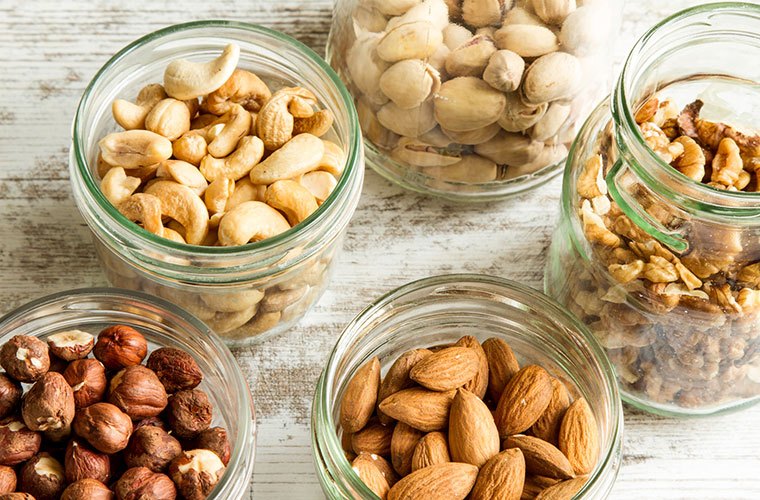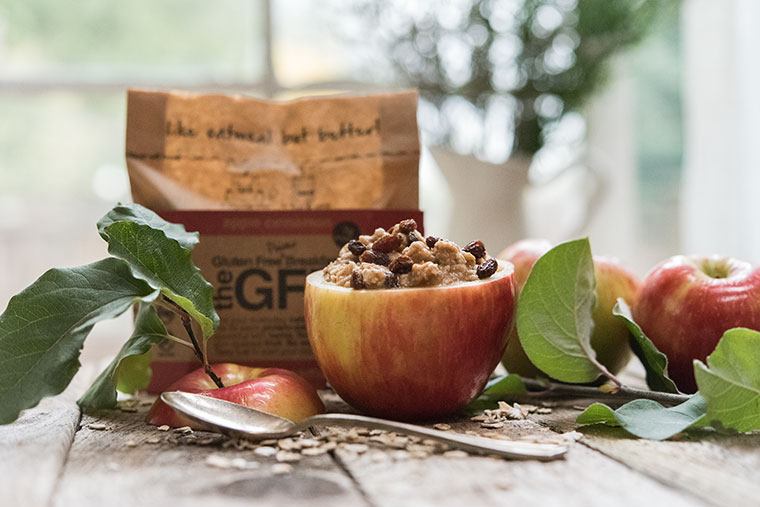Today Is National Gluten-Free Day—Here’s Why That’s Important
Yep, it's weird to think there was a time before we all didn't talk about gluten (which, for the record, is a mix of proteins found in wheat). But after loads of studies and anecdotes from celebs, it's officially become totally normal to avoid the stuff in the name of less brain fog and more energy.
Whether you have a gluten intolerance or just feel better without it, there's now an official day for you to post your bread-less sweet potato toast on Instagram proudly: National Gluten-Free Day.
After loads of studies and anecdotes from celebs, it's officially become totally normal to avoid gluten.
But how did we get here? To find out, you have to look not only at medical research, but also at the trailblazing brands that offered gluten-free foods long before it felt trendy (and fulfilled a real need). Case in point, The GFB: The Gluten Free Bar®.
Founded by brothers Marshall and Elliott Rader, the uber-popular line of protein bars and bites was created to disrupt the industry with options made from simple ingredients and actually taste good. And since Marshall has celiac disease (a serious genetic autoimmune disease that's easily triggered by gluten), it became a personal mission—that's changed the gluten-free scene in the process.
Keep reading to learn how the gluten-free movement took over the wellness world—and where it's going next.

The dark ages of gluten-free offerings weren’t that long ago
“I went gluten-free in 2008, and it was very much still the stone age of the gluten-free world,” Marshall says. Back then, the main snack offerings were pretty much regulated to just nuts and trail mix (#TBT).
“If you were gluten-intolerant or had celiac, you were grossly underserved in terms of tasty snacks made with quality ingredients,” Elliott says. “If something was specially made to be gluten-free, there was a stigma that it probably tasted bad. And guess what? That was usually the case.”
And in the early days of their new diets (around the time Marshall was diagnosed with celiac, Elliott realized that he too had a severe gluten intolerance), there were only a couple protein bar brands with gluten-free options—and the questionable ingredients definitely did not encourage a second helping.

How The GFB elevated the gluten-free game
The answer was innovation. “We thought we could do a better job of creating a good-tasting, gluten-free protein bar made with simple, nutritious ingredients,” Marshall says. And in 2010, The GFB was born.
After several early iterations, The GFB accomplished its goal of utilizing simple ingredients for superior taste. “The first GFB had whey protein, and then we realized that dairy allergies can be common for those with celiac or gluten intolerances,” Marshall remembers. Finally, the brothers landed on a just-right, non-GMO protein blend of brown rice and peas—but they're always striving to push the boundaries.
To wit: Since its launch, The GFB line has grown to include more varieties (think oatmeal raisin and coconut cashew crunch) and additional eats like crunchy The GFB Bites and flavorful breakfast oatmeals. And the gluten-free aisle at the grocery store is seeing the arrival of other kinds of snacks, like beef jerky, that are going GF for the first time.
“We thought we could do a better job of creating a good-tasting, gluten-free protein bar made with simple, nutritious ingredients.”
“You can now usually find a gluten-free version of whatever food you want and many of them taste pretty good, if not great,” Elliott adds. “Though we’re still looking for that perfect gluten-free IPA.”
But The GFB still stands out from the (ever-growing) crowd because of its wholesome ingredients. "A lot of brands today talk about simple or natural ingredients, but at the same time contain industrial ingredients like glycerin, palm kernel oil, or chicory root syrup to boost fiber count," Marshall says. "It's the game a lot of manufacturers play to make their nutrition count look better."
And it's a game The GFB just doesn't play. "We don't use questionable ingredients to boost nutritional data in our favor," Marshall says. Translation: The honest labeling you see on The GFB must-haves means you know you're actually getting the good stuff.

What’s next for gluten-free?
The brothers are keeping their fingers crossed for that elusive perfect bottle of GF IPA, and also predict the gluten-free market will keep growing with stronger product options.
“Our customers tell us there is no way you would know our products are gluten-free,” Marshall says. “Our taste and texture is as good or even better than our conventional competitors.”
No matter their dietary restrictions (think soy-free, dairy-free, and vegan in addition to gluten-free), Marshall says consumers will continue to demand better products. And the good ones will follow The GFB's lead and deliver—which is especially important when your diet dictates that every day is Gluten-Free Day.
In partnership with The GFB®
Top photo: The GFB®/Nicole Mamola
Loading More Posts...